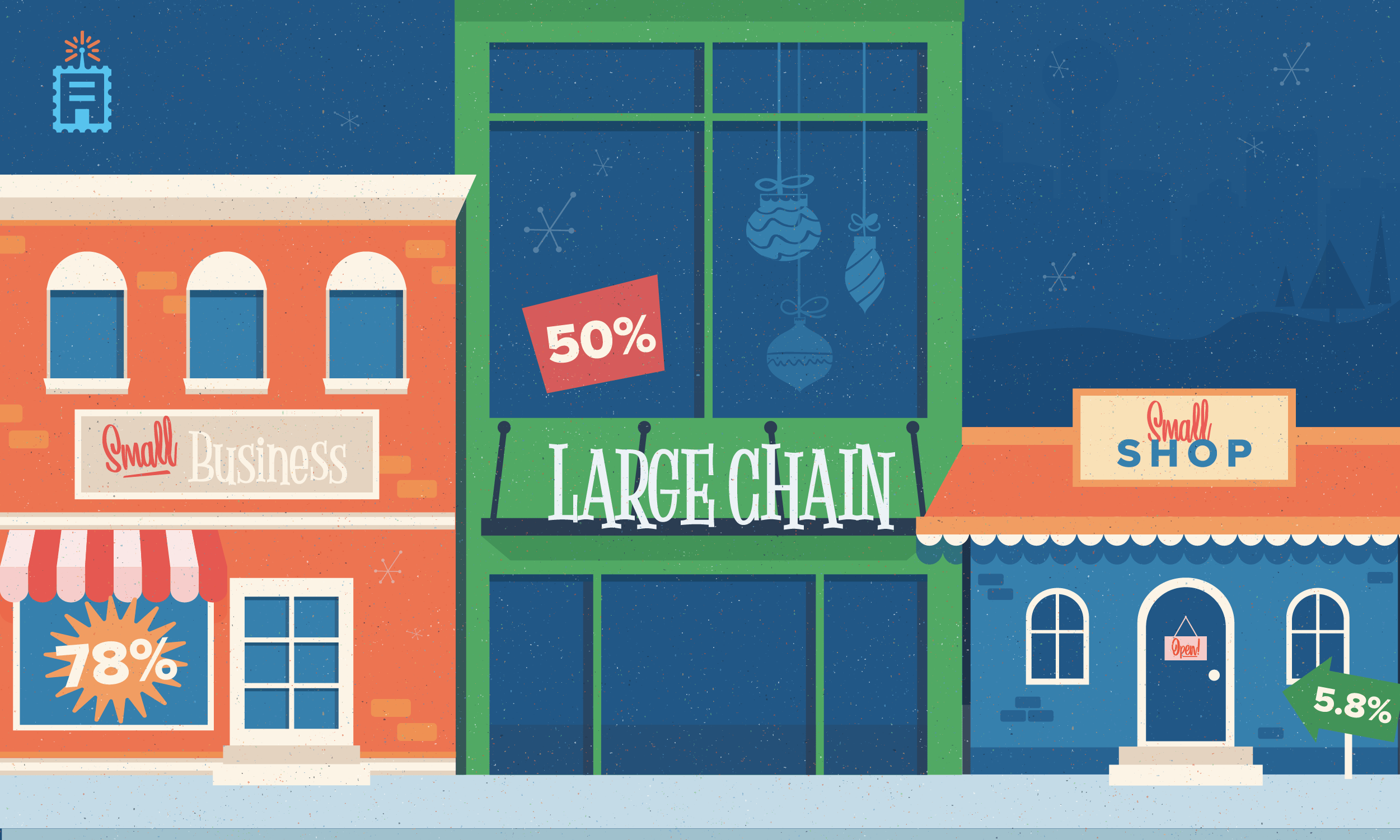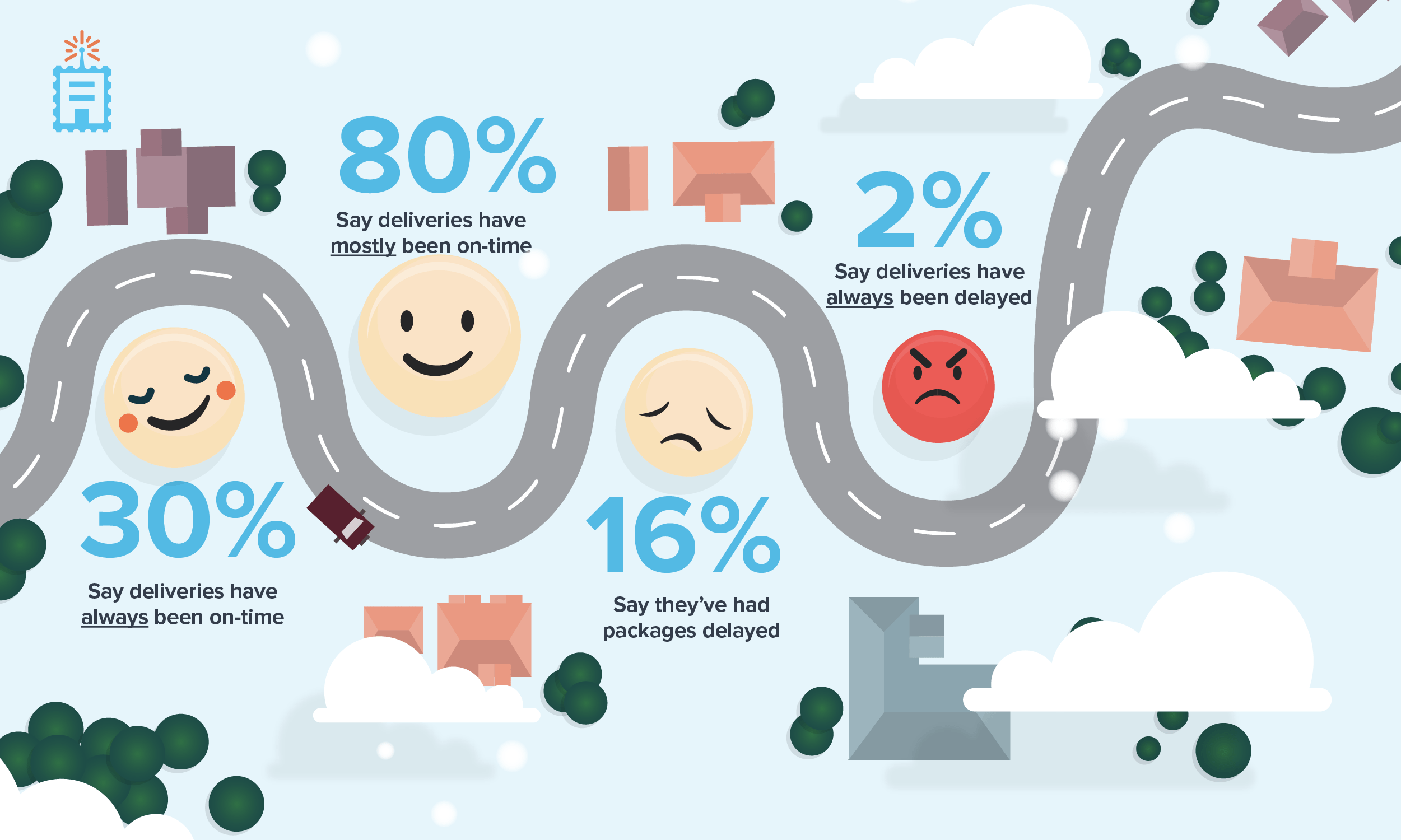For ecommerce sellers, acquiring a customer is only half the conversation. Here’s what happens behind the scenes after a customer hits “Submit” at checkout.
Order fulfillment, or ecommerce fulfillment, is the process of getting products from your space into the customers’ hands. The process starts once a customer places an order, and ends when the shipment arrives.
The conversation around order fulfillment could fill many books. So we’re giving you a short rundown of the key pieces of the process. Plus, advice on how to master it.
Breakdown of the Order Fulfillment Process:
- Customer places order, retailer receives order and confirmation email is sent
- Warehouse, fulfillment center, or distribution is contacted to pull item(s)
- Order is picked and packed to ship
- Order is picked up by carrier
- Shipment notification is sent to customer, tracking info is provided if available
- Order is received by customer
- Exchange or refund initiated by customer if required
Key Points to Understand:
Order Fulfillment Services
These companies (sometimes called third-party logistics providers or 3PLs) perform outsourced logistics to manage fulfillment. They integrate with your store to react in real-time to orders. Some are full-service partners, who store and manage warehouses completely. Others simply handle picking and pulling. Depending on the partner, order fulfillment services can make the process as hands-off as you need it to be.
In-House Fulfillment
Ecommerce sellers who perform self-fulfillment handle everything from start to finish. This model works well for smaller businesses. Especially, those with high-value and low-frequency order volume such as companies selling custom-made goods. In-house fulfillment involves processing, picking, packing and shipping orders yourself often through a dedicated fulfillment team.
Inventory management
No matter which method of fulfillment you choose, you’ll still need to account for inventory management. This is an umbrella term that involves monitoring and managing your stock across every location. For effective inventory management, you’ll need to perform regular inventory audits, review inventory storage options, manage barcode label and SKU creation, and mitigate inventory loss. For ecommerce retailers who want an easier option, consider a warehouse management system (WMS). These are software solutions that can handle everything listed above. Plus, they give you the ability to manage the actual operations of the warehouse.
Fulfillment Methods
- Dropshipping – For retailers who don’t want to touch the products they sell, dropshipping is an efficient option. When a customer places an order, the dropshipping vendor simply pulls and packs the item, then ships it out. The retailer never handles the item directly, making it a completely hands-off process. It’s a system that relies heavily on a third-party and has become very popular in recent years. While it works great for some companies, it often comes with high markup and can potentially involve challenges that a retailer cannot easily solve, like quality control.
- Hybrid fulfillment – This is a combination of dropshipping and in-house fulfillment. Companies stock, manage, and ship their own products, but also outsource some of their sales to a dropshipping partner. This is popular with regional brands that are in the process of expanding their footprint to reach a wider number of customers with faster shipping options.
Common fulfillment challenges
- Inventory storage – Many retailers struggle with deciding where to store inventory. Some might choose to go the dropshipping route for this reason. Others opt to manage warehouses or distribution centers themselves to maintain control. There’s no one-size-fits-all solution for inventory storage, so it’s important that every retailer carefully considers their options. Many retailers find that having multiple distribution centers is beneficial to their business, as it puts products closer to customers.
- Inventory shrinkage (Inventory loss) – This is the loss or lack of actual inventory versus what’s recorded in your system. Whether due to shipping damage, accounting errors or packing errors, inventory shrinkage is nearly universal – but it is preventable. The good news is, there are several methods to combat it. Be sure to perform regular inventory audits, invest in high-quality warehouse systems and personnel, and be conservative with counts to avoid selling items you don’t actually have.
- Customs restrictions – If you’re an ecommerce seller who doesn’t commonly sell and ship overseas, you’re likely not familiar with all the intricacies around it such as customs processes and shipping restrictions. If you’re able to get ahead of issues with effective documentation and declarations, you should be in the clear. However, it’s vital that you understand the process before shipping out your first international order.
Easy Wins for Retailers
Order fulfillment may sound straightforward by definition, but in reality, it’s a complex process with many factors at play. But at the end of the day, the most important part of the process is your customer, and the experience they have with from you. To make fulfillment easier on them, consider taking these steps:
- Communicate clearly – Before a customer hits “Submit”, make sure they’ve seen the actual delivery date of their order. Let them know about any anticipated delays, who their carrier will be, and whether or not they should expect tracking information. The more detail you can provide, the more satisfied customers will be.
- Be ready for exceptions – No matter how smoothly your business operates, there’s always a chance for complications and delays. A good starting place is to set up your shipping with more than one carrier, so that if an issue arises, you’ve got a backup option ready and waiting.
- Use the right tools and partners – You don’t have to go it alone. With so many high-quality options for dropshipping, order fulfillment, warehouse management, and shipping management available, you’ll thank yourself later for finding and implementing the tools that will make your fulfillment process run smoother.
The Shipping Strategy Partner You Need
We’ve got good news – the shipping strategy partner you need to nail your checkout experience is right here. With our full-featured Shipping Rate Management platform, you can customize your checkout so it accounts for every imaginable purchasing scenario. That means offering multiple shipping methods, real-time rates, accurate delivery dates, time slot delivery and much more.
With ShipperHQ, you can also receive order details, which include carrier, price, shipping method and appended date and time. Plus, if your store is built on Magento or Zoey, you get extra order information such as shipping origin, packing details, in-store pickup locations, and time slots.
To make your fulfillment process smooth and simplified, start a free 15-day trial of ShipperHQ today.






